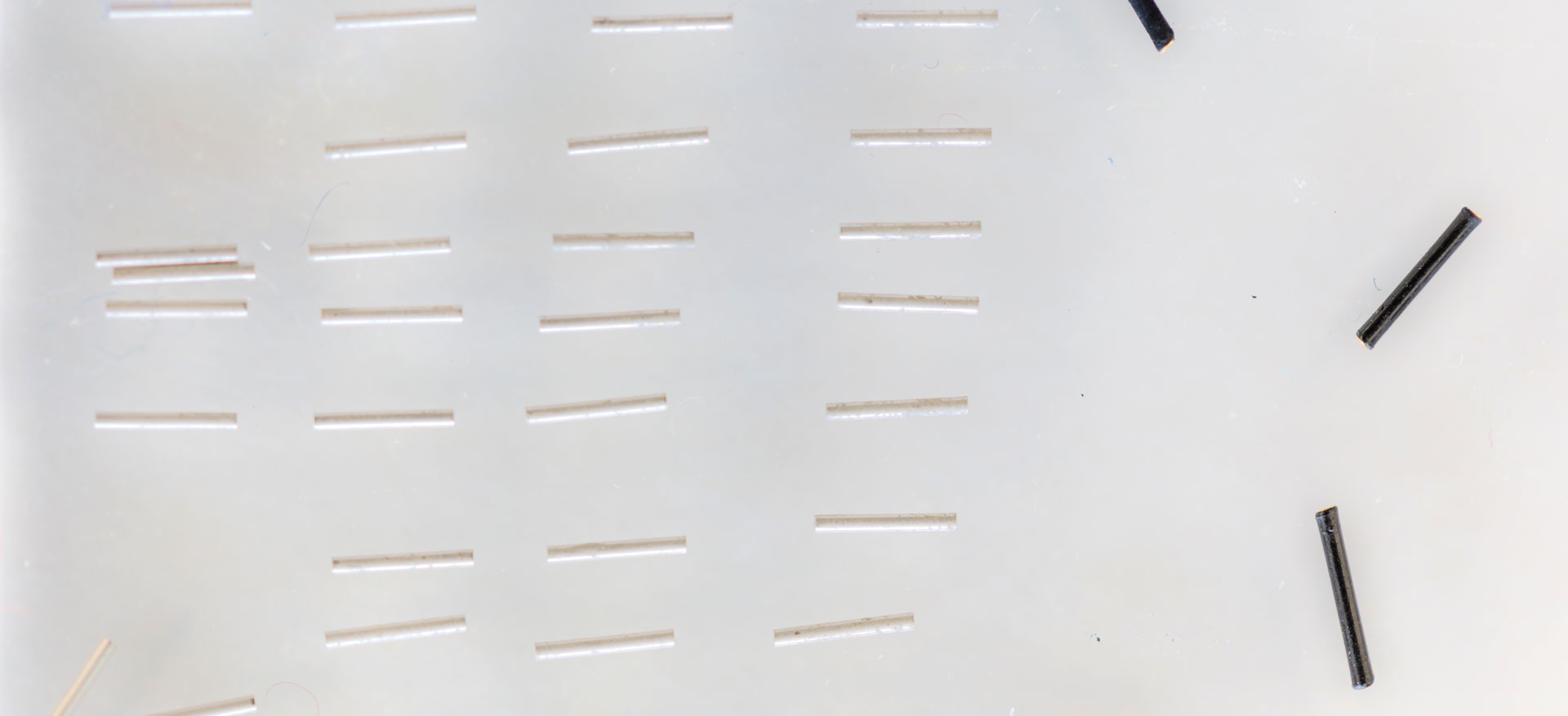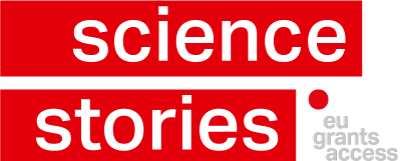
A Journey Through EU Grant Applications and the Beauty of Microrobotics
Almost no one in Zurich has submitted as many applications for European research funds as he has – and his success rate also tops them all: a conversation with Salvador Pané Vidal, Co-Director of the Multi-Scale Robotics Lab at ETH Zurich, about crazy ideas, Sudokus of materials and microrobots for the medicine of the future.
I was told you are a world champion in applying for European grants. How many applications have you written already?
For sure more than 30.
And how many were successful?
I have received three ITNs, three ERCs, three ERC Opens, two FET (EIC) Open and one FET Proactive, so 12 altogether, and with the Eurostar projects, a total of 15.
What a success rate! How much money in total did you raise with it and how much time in total have you invested in them?
Between six and seven million euros. I spend a lot of time writing proposals and sometimes I wish I had more time to dedicate to them. However, we usually start working on proposals three to four months before the deadline. This commitment often requires sacrificing vacations and weekends. Sometimes, the deadline falls on the 14th of January, which means I even have to work over Christmas.
This is a big sacrifice.
Yes, I remember in particular one ITN project that I was writing with a coordinator in Italy. We had a phone call at 4 o’clock in the morning of the 31st of December! We were writing all night because we wanted to have at least one large section of the proposal finished so we could enjoy New Year’s Eve in tranquillity. But I guess that this is the same for everyone, it’s how the business is.
Yes, but almost nobody writes as many proposals as you have.
Well, some of the proposals were collaborative efforts, but I also must say that the occasions when I was most successful were when I really took a more active part in the writing and usually with a team that is available “24 hours a day”. We all have families, but we understand each other and can connect wherever we are. Sometimes, I might be on the street or in the supermarket and one of my colleagues calls me and asks me to send some information. I then stop whatever I am doing, access Dropbox on my mobile phone and send what is required.
And how do you find these good colleagues and friends?
You find them along the way, perhaps by collaborating on some research. I met one of my best friends, Professor Josep Puigmartí, who is currently at the University of Barcelona, while he was at ETH Zurich, and we wrote several proposals together and with other partners. Others you may meet via professional associations. I am a member of the European Academy of Surface Technology EAST and was once asked to write proposal for a COST Action on the topic of electrodeposition and corrosion. EAST had tried twice in vain and then asked me to take over. I contacted a couple of my friends from Barcelona and another from Greece who I met through EAST, we wrote the application together and were successful in winning the grant. Therefore, the team is crucial and being able to trust reliable individuals is essential.
You have been in the research of robots since 2007. Is this a particularly attractive field for European grants?
Not necessarily. There was a specific call, of which I am currently the coordinator, called FETPROACT, where they explicitly sought microrobotics technology, but this is not always the case. What is very important: in projects like the EIC Open, the EU is seeking for high-risk/high-reward actions. Many people think that in these projects, the things that are asked are super crazy. This is not the case: the project must be ambitious but rooted in solid fundamentals. It should address a problem that, if solved, will pave the way for a new technology.
But microrobots are in general very interesting for future technologies.
Yes, but you have to find realistic applications – and then propose them. We actually have five funded projects in which microrobotics are involved. Others are more focused on solving materials for biomedical applications, which are of course also related to small-scale robotics.
What do your successful projects have in common?
Our aim is to propose great science, which means the proposals have good fundamentals, reasoning, logic and a clear vision. We like to take risks and step out of our comfort zone, but at the same time, we are realistic in our goals. This is what we try to do and what is common in all my successful EU projects.
What about the subjects? Are your EU projects all located in the same field?
Yes and no: some of them focus on the development of materials and processing that can be translated into micro-/nanorobotic applications, and some are focused more specifically on micro and nano robotics. This field is highly multidisciplinary, which means that sometimes we need to study, for example, materials and fabrication from a more fundamental point of view.
Are there projects for which one grant was more important than others?
I always say: money is money and we need it for research. But of course, the ERC Starting Grant and the ERC Consolidator Grant are extremely important, because they highlight you as a group leader. These grants put you on a specific stage and help consolidate your career as a research leader. They have a lot of prestige, and could even be a deciding factor on whether you secure a faculty position or not. However, I like all my projects.
Why were you so successful?
One very important factor is understanding the call. Many people start writing a proposal and don’t properly read what the call involves. If the call is asking for impact, it is not enough to write “yes, microrobots are going to impact health care.” You have to provide clear, measurable details of how your research and your consortium are going to make an impact. The proposal must convince the evaluators that you will create an industry, work places and new technologies. This is very important. And this is probably why I was successful the very first time I wrote an application: I repeatedly mentioned how this project would connect with all the elements of the programme. I was told that the success rate was 1.5 percent and that I would most likely not get the grant – but in the end, my proposal was successful.
Were there never moments when you had enough of writing applications after a rejection?
No, I never give up. This is something both my parents and Professor Bradley Nelson, the Director of the Multi-Scale Robotics Lab, told me: never give up. Of course, there are frustrating moments, for example, when a reviewer tries to tell you that you are not writing the deliverables convincingly – when you have already written ten proposals and know exactly how deliverables should be written.
After having written so many applications, can you see mistakes in advance during the submission process?
Yes! For example, the impact I mentioned before – it’s not enough to write that the medical devices are good, you have to give specific numbers and show how advanced they are in comparison to what is on the market. I think this is crucial. I usually know in advance whether an application will be unsuccessful. However, when it comes to being accepted, that’s a different story.
How competitive is your field of research within the EU?
I was just discussing this recently with a colleague. Currently, many people are working in the field of micro/nanorobots and the competition is fierce. The advantage of our group is that we have expertise in many areas: materials, medical devices, robotics, navigation systems and so on. This is why we are a competitive group at international level.
You work on microrobots that should one day be used in medicine in the body of patients. What’s the most difficult part in developing them?
If you implant a microrobot in the body and it has to move through it, the material has to be sufficiently responsive to the input that it receives. However, the material that is most suitable for motion inside the body is toxic. Finding an alternative is like a Sudoku challenge of materials. You want the material to be biocompatible, but this might not be biodegradable or easily cleared from the body. If it is, it might not navigate well through the body. Also, it needs to be compatible with all the other components of the microrobot. Let’s say you want to add a contrast agent or a drug. The process of making the robot might involve a step, like heating, that could potentially damage the drug. As a result, all the steps in the fabrication process need to be re-evaluated.
A lot of elements to think about.
Yes, you always have to consider the specific application and target, and then conduct a screening of all the relevant knowledge. Based on this, you can make a decision regarding the device. This process represents both the challenge and the beauty of this research.
What robot applications are you currently working on?
One application we have put a lot of effort into is a robot for stroke patients – in the EU project FETPROACT ANGIE, which I coordinate. We proposed magnetically steerable wireless nanodevices that can deliver medication in any specified vascular region of the body. A preliminary test on a large animal started in June.
Another project I am working on focuses on the spinal cord, specifically a miniature structure designed to deliver wireless electric fields and stimulate the tissue. Currently, we are conducting experiments with zebrafish embryos. These experiments allow us to observe the navigation of the structure inside these organisms and test our approach in a more realistic scenario than in cell cultures.
Are all micro and nano robots steered magnetically?
No, other scientists work with ultrasound or light. In our case, we are trying to perfect magnetic navigation systems to be implemented in hospitals. This is one of the objectives of our project FETPROACT ANGIE. Our goal is to create magnetic navigation systems that do not rely on extra infrastructure system, so they can be installed in hospitals. This is one of the objectives of our project ANGIE.
How long is the road to practical application?
I believe we are getting closer. It may sound optimistic, but I think we may witness the initial adoption of this technology within the next five years.
Interview with Salvador Pané Vidal
Salvador Pané Vidal
Salvador Pané Vidal is an Adjunct Professor of Materials for Robotics at the Institute of Robotics and Intelligent Systems (IRIS) and Co-Director of the Multi-Scale Robotics Lab (MSRL) in the Department of Mechanical and Process Engineering at ETH Zurich. Born in Barcelona in 1980, he studied and completed his PhD in Barcelona in 2007 and came to ETH Zurich as a visiting PhD student in 2008, becoming a postdoctoral researcher at IRIS and a Senior Scientist in 2012. His wife is a medical doctor and they live in Zurich with their three small children.
Newsletter Registration
Receive news on international funding opportunities and be informed about the latest developments with regards to the international funding landscape.







